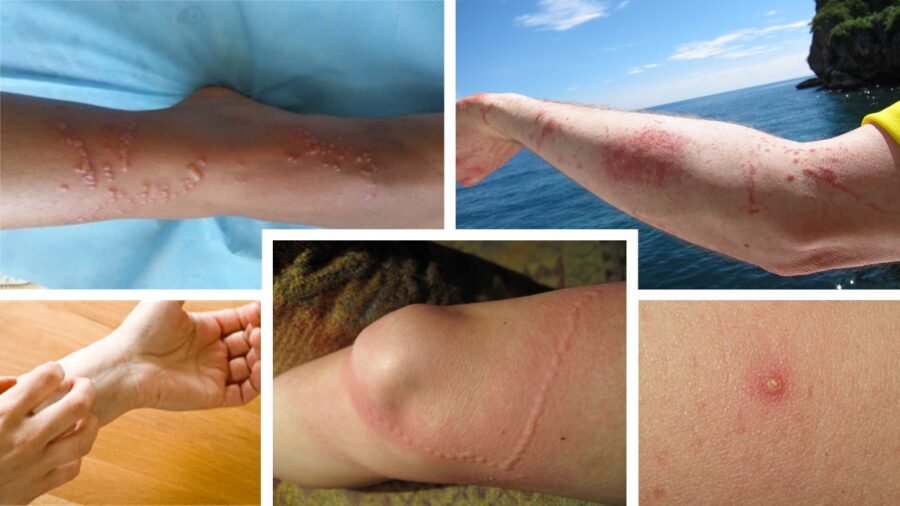Stingray Sting Long-Term Effects – Unraveling the Hidden Impact
Curious about “stingray sting long-term effects”? Wonder no more! While these enigmatic creatures may seem tranquil, their stings can leave lasting consequences you wouldn’t want to ignore. From lingering scars to potential nerve damage, it’s crucial to understand the aftermath of a stingray sting.
Beyond the initial pain and discomfort, stingray stings can have significant long-term effects on those unfortunate enough to cross paths with them. The consequences can range from scarring and nerve damage to the risk of infections or allergic reactions.
In this article, we will delve deeper into stingray sting long-term effects. We will explore the potential outcomes of stingray encounters, including the risk of scarring and nerve damage, the role of infections, and the possibility of allergic reactions. So, grab your snorkel and let’s navigate the depths of these elusive sea creatures together.
Stingray Sting Long-Term Effects
Stingray stings, while generally not life-threatening, can have long-term effects that vary depending on individual, the location of the sting, and the severity of the injury.
9 months after stingray sting, surgery was performed on a woman who was and had foreign object removed. The surgery was prompted by the chronic inflammation the woman had on her left foot following a stingray sting.
It’s essential to understand the potential stingray long-term effects to take appropriate precautions and seek medical attention if necessary. Here are some common long-term effects of a stingray sting:
1. Chronic Inflammation
Chronic inflammation is one of the potential stingray sting long-term effects. When a stingray’s barb pierces the skin, it injects venom into the wound, triggering an immediate inflammatory response as the body attempts to defend against the venom.
In most cases, this acute inflammation subsides over time with proper medical attention and wound care. However, in some instances, the inflammatory response may persist or become chronic.
This can happen if the wound is not properly treated, if an infection develops and prolongs the inflammatory process, or if you have an allergic reaction to the venom.
Chronic inflammation can also occur when the venom’s components remain in the body, continually stimulating the immune system.
2. Scarring
One of the most common stingray sting long-term effects is scarring at the site of the sting. Stingray barbs are designed to cause significant tissue damage, and as the wound heals, it can leave behind a scar.
The severity of scarring can vary based on factors such as the depth of the sting and individual healing capabilities.
3. Nerve Damage
In some cases, a stingray sting can result in nerve damage, leading to persistent pain, tingling, or numbness in the affected area. This can take weeks or even months to improve and may require medical attention and rehabilitation.
4. Infections
Stingray stings have a higher risk of infection due to bacteria present on the stingray’s barb or in the water. If the wound becomes infected, it may require prolonged treatment with antibiotics and can cause complications if not properly managed.
5. Allergic Reactions
Some individuals may experience an allergic reaction to stingray venom, leading to more severe and prolonged symptoms. This can include difficulty breathing, hives, or swelling in other parts of the body.
6. Psychological Impact
Enduring a stingray sting can have psychological effects, especially for individuals who experienced a severe reaction or faced prolonged recovery. Fear or anxiety related to water activities may develop, impacting a person’s quality of life and recreational choices.
7. Delayed Onset of Symptoms
In certain cases, symptoms may not manifest immediately after the sting but can appear hours or days later. Delayed reactions can lead to confusion about the severity of the injury and the appropriate course of action.
8. Reduced Mobility
If a stingray sting causes significant damage to muscles or tendons, it may lead to reduced mobility or difficulty using the affected limb. Physical therapy and rehabilitation may be required to restore full function.
It’s important to remember that most stingray stings do not result in long-term effects, and the majority of individuals recover fully with proper treatment.
However, it’s crucial to treat any sting seriously, as complications can arise. If stung by a stingray, seeking immediate medical attention is advised to assess the severity of the injury and receive appropriate care.

How To Treat Stingray Sting Long-Term Effects: Steps For Recovery And Relief
While most stingray stings do not result in long-term effects, there are instances where individuals may experience lingering consequences that require proper treatment and management. If you or someone you know is dealing with stingray sting long-term effects, here are essential steps for recovery and relief:
1. Medical Evaluation
If you suspect any long-term effects from a stingray sting, seek professional medical evaluation promptly. A healthcare provider will assess the injury and determine the extent of the damage, providing a targeted treatment plan for your specific condition.
2. Pain Management
Chronic pain is one of the common long-term effects of a stingray sting. Your healthcare provider may prescribe pain medications or recommend non-pharmacological methods such as physical therapy, heat/cold therapy, or relaxation techniques to manage and alleviate pain.
3. Wound Care
Proper wound care is essential, especially if the sting results in tissue damage or infections. Follow your healthcare provider’s instructions on keeping the wound clean, changing dressings regularly, and monitoring for signs of infection.
4. Anti-inflammatory Medication
If inflammation persists, anti-inflammatory medications may be prescribed to reduce swelling and discomfort. However, always follow your doctor’s advice and never self-medicate.
5. Physical Therapy
For individuals with nerve damage or reduced mobility, physical therapy may be beneficial. A qualified physical therapist can design exercises and therapies to improve muscle strength, flexibility, and function.
6. Scar Management
If scarring occurs at the sting site, consult a dermatologist or wound care specialist for scar management techniques. These may include topical treatments, laser therapy, or silicone gel sheets to minimize the appearance of scars.
7. Allergy Monitoring
If you experienced an allergic reaction during the initial sting, your healthcare provider may recommend allergy testing or provide an epinephrine auto-injector (EpiPen) in case of future encounters.
8. Psychological Support
Dealing with long-term effects can be emotionally challenging. Consider seeking psychological support from a therapist or counselor if you experience anxiety, fear, or distress related to the stingray sting.
9. Lifestyle Adjustments
Depending on the extent of the long-term effects, you may need to make lifestyle adjustments to accommodate any mobility limitations or physical restrictions.
10. Follow-Up Care
Regular follow-up appointments with your healthcare provider are essential to monitor your progress and make adjustments to the treatment plan as needed.
How To Prevent Stingray Sting Long-Term Effects
Preventing stingray sting long-term effects involves taking precautionary measures to minimize the risk of encounters and promptly managing any stings that do occur. Here are some essential steps to prevent stingray sting long-term effects:
- Seek medical attention immediately: If you are stung by a stingray, it is important to seek medical attention immediately. The doctor will be able to assess the severity of the sting and provide treatment to help relieve the pain and prevent complications or stingray sting long-term effects.
- Follow the doctor’s instructions: The doctor will give you specific instructions on how to care for the sting. Be sure to follow these instructions carefully to help prevent infection and other complications.
- Be patient: The healing process can take several weeks or even months. Be patient and don’t overdo it during the healing process.
- See a therapist: If you are experiencing any psychological effects of the sting, such as fear of water or anxiety, it is important to see a therapist. A therapist can help you to manage these symptoms and cope with the emotional effects of the sting.
Preventing Stingray Stings: Tips For Safe Encounters In The Water
Stingray stings can be a painful and unpleasant experience, but with some simple prevention measures, you can significantly reduce the risk of encountering these graceful creatures and protect yourself from potential stings.
Here are essential prevention tips to keep in mind while enjoying water activities in areas where stingrays inhabit:
1. Stay Informed: Be aware of the presence of stingrays in the areas you plan to visit, especially when engaging in water activities in coastal and tropical waters. Local authorities often provide information and warnings about stingray populations in certain regions.
2. Shuffling Feet: When wading in shallow waters where stingrays might be buried in the sand, shuffle your feet instead of taking large steps. This motion alerts stingrays of your presence, giving them the opportunity to swim away.
3. Wear Protective Footwear: When swimming, snorkeling, or wading in waters with known stingray populations, consider wearing sturdy protective footwear, like water shoes or sandals. This can act as a barrier between your feet and the stingray, reducing the chances of getting stung.
4. Heed Local Warnings: Pay attention to warning signs or announcements from local authorities, lifeguards, or dive operators about stingray sightings or known hotspots. Follow their guidelines to reduce the risk of encounters.
5. Avoid Feeding Stingrays: Refrain from feeding or attempting to touch stingrays in the wild. Feeding them can alter their natural behavior, leading to more interactions with humans and increasing the likelihood of stings.
6. Do Not Disturb: If you spot a stingray while snorkeling or diving, maintain a safe distance and avoid disturbing the creature. Respect their natural habitat and observe them from a distance.
7. First Aid Kit: Carry a basic first aid kit when participating in water activities. This kit should include bandages, antiseptic, pain relief medication, and any necessary medications for allergic reactions.
8. Proper Wound Care: If a stingray sting does occur, promptly rinse the wound with warm water to remove any venom and reduce the risk of infection. Seek immediate medical attention for proper assessment and treatment.
9. Allergy Awareness: If you are aware of any allergies to venom or marine creatures, inform your travel companions and ensure they know how to assist you in case of an emergency.
Immediate Symptoms Of A Stingray Sting (Stingray Sting Long-Term Effects)
When someone is stung by a stingray, the experience can be excruciating. The most common immediate symptoms include:
1. Intense Pain: The stingray’s venom contains toxins that cause intense pain at the site of the wound. The pain can be sharp and may radiate to other areas of the body.
2. Swelling: The affected area will likely swell rapidly due to the inflammatory response triggered by the venom.
3. Redness and Discoloration: The skin around the sting site may become red or discolored as a result of increased blood flow and inflammation.
4. Bleeding: In some cases, the sting may cause bleeding, especially if the barb has penetrated deeply.
5. Muscle Cramps: Stingray venom can cause muscle cramps or spasms near the wound, adding to the discomfort.
Initial Steps For Stingray Sting Treatment
Immediate and appropriate treatment is crucial to minimize the impact of a stingray sting. Here are the initial steps individuals should take in case of a sting:
1. Rinse the Wound with Warm Water: The first and most crucial step is to rinse the wound thoroughly with warm, not hot, water. This helps remove any remaining venom and reduces the risk of infection.
2. Control Bleeding: If the sting causes bleeding, apply gentle pressure with a clean cloth or sterile gauze to control the flow. Avoid using a tourniquet, as it may exacerbate tissue damage.
3. Soak in Hot Water (Non-Scalding): Soaking the affected area in hot water (around 104-113°F or 40-45°C) for 30 to 90 minutes can help alleviate pain and neutralize some of the venom’s effects. The water temperature should be tolerable but not scalding, as high temperatures can worsen the injury.
4. Do Not Remove the Barb: It is essential not to try to remove the barb on your own, as this may cause further injury and embed the barb deeper. Leave the removal to medical professionals.
5. Seek Immediate Medical Attention: Stingray stings can lead to complications, and professional evaluation is essential. Go to the nearest medical facility for proper assessment, wound care, and pain management.
6. Elevate and Immobilize the Affected Limb: If the sting occurs on a limb, elevate it and keep it as immobile as possible to reduce swelling and pain.
RELATED: Do Water Shoes Protect From Jellyfish? Find Out Now!
The Severity Of Stingray Sting Long-Term Effects
The severity of the long-term effects of a stingray sting can vary depending on a number of factors, including:
- The severity of the sting: The more severe the sting, the more likely it is to have long-term effects.
- The individual’s medical history: People with certain medical conditions, such as diabetes or peripheral vascular disease, are more likely to experience long-term effects from a stingray sting.
- The location of the sting: Stings that occur in the feet or hands are more likely to have long-term effects than stings that occur in other areas of the body.
- The type of stingray: Some species of stingrays have venom that is more potent than others. Stings from these species are more likely to have long-term effects.

Stingray Venom Effects
Just like jellyfish, stingray venom effects include intense pain, swelling, redness, and potential tissue damage. The venom’s toxins cause immediate and severe discomfort at the sting site, requiring prompt medical attention for proper treatment and relief.
In addition to the immediate effects, stingray venom can also lead to muscle cramps and spasms near the sting site. The venom’s components act as potent irritants to the body’s tissues, triggering an inflammatory response that results in the swelling and redness observed after a sting.
The pain caused by stingray venom is often described as excruciating and can radiate to surrounding areas. The severity of the pain can vary depending on factors such as the location of the sting, the depth of the penetration, and the individual’s sensitivity to the venom.
Apart from the pain and swelling, stingray venom can also cause tissue damage at the sting site. The barb of a stingray is equipped with backward-facing serrations, which can make it challenging to remove from the wound.
As a result, the venom may remain in the affected area, continuing to inflict damage even after the initial encounter.
Stingray Sting Healing Process
The healing process of a stingray sting just like a jellyfish sting typically involves initial wound care to clean and disinfect the site, followed by the body’s natural inflammatory response.
Over time, the wound starts to close and form a scab, allowing new tissue to grow and repair the affected area. With proper care and treatment, most stingray stings heal within a few weeks, although the exact healing time can vary based on the severity of the sting and individual factors.
Nerve Damage From Stingray Sting
A stingray sting can cause nerve damage in some cases. The venom from the stingray’s barb contains toxins that can affect the nerves around the wound site. This can lead to symptoms such as persistent tingling, numbness, or weakness in the affected area.
The extent of nerve damage can vary depending on the severity of the sting and the individual’s response to the venom. Seeking prompt medical attention and appropriate treatment can help minimize the impact of nerve damage and facilitate the best possible recovery.

Stingray Sting Infection
A stingray sting can lead to an infection at the wound site. The venom and the barb’s foreign material can introduce bacteria into the wound, increasing the risk of infection.
Signs of infection may include increased pain, redness, swelling, warmth, or the presence of pus at the sting site. Prompt medical attention and proper wound care are essential to prevent and treat infections effectively.
Stingray Sting Itching A Week Later
Itching at the stingray sting site a week later is a common occurrence during the healing process. The itching sensation is a natural part of the body’s inflammatory response as the wound continues to heal.
However, it’s essential not to scratch the affected area, as it can disrupt the healing process and potentially lead to complications or infection. If the itching becomes severe or is accompanied by other concerning symptoms, it’s advisable to seek medical advice for appropriate management.
Day After Stingray Sting
The day after a stingray sting, you may experience swelling, redness, pain, and tenderness at the sting site. These are typical immediate reactions to the venom injected during the sting.
It’s essential to continue with proper wound care, keep the area clean, and avoid activities that may aggravate the injury. If the symptoms worsen or if there are signs of infection, seek medical attention promptly for appropriate evaluation and treatment.
Stingray Myths And Misconceptions
Here are some common myths and misconceptions about stingrays and their stings, along with accurate information to dispel these misunderstandings:
Myth 1: All Stingrays Are Aggressive and Will Sting You if They Get the Chance
Fact: While stingrays are equipped with a barbed spine for self-defense, they are not inherently aggressive creatures. Most stingrays are docile and prefer to swim away from humans if given the opportunity. Stingrays usually only use their barbed spine when they feel threatened or cornered.
Myth 2: Stingrays Always Attack Humans Deliberately
Fact: Stingrays do not intentionally attack humans. Most stingray stings occur when a person accidentally steps on a ray buried in the sand or inadvertently disturbs one while swimming. The sting is typically a defensive reaction, not an act of aggression.
Myth 3: The Barb from a Stingray Sting Always Remains Lodged in the Wound
Fact: The barb from a stingray sting does not always remain lodged in the wound. In fact, it often detaches from the stingray and may not be present in the wound at all. If the barb is present, it can usually be removed during medical treatment.
Myth 4: You Should Urinate on a Stingray Sting to Relieve the Pain
Fact: Urinating on a stingray sting is not an effective or recommended treatment. The best course of action is to rinse the wound with warm water and seek immediate medical attention.
Myth 5: Stingray Stings Are Always Fatal
Fact: Stingray stings are usually not fatal. While they can be extremely painful and cause complications if not treated promptly, most people recover fully with appropriate medical care.
Myth 6: Stingrays Are Highly Venomous
Fact: Stingrays do produce venom, but their venom is generally not as potent as that of some other marine creatures. The severity of a sting varies, and most stingray stings are not life-threatening.
Myth 7: Stingrays Attack by Swooping Up and Striking with Their Tails
Fact: Stingrays do not attack by swooping up and striking with their tails like some portrayals in movies or media. They usually defend themselves by arching their tails upward, causing the barb to strike if something comes into contact with it.
Myth 8: Stingrays Are Always Found in Shallow Waters Near the Shore
Fact: While stingrays can be found in shallow waters near the shore, they also inhabit deeper ocean areas. Some species of stingrays prefer different habitats, so encounters can happen at various depths.
Myth 9: Stingrays Are Not Worth Protecting
Fact: Stingrays play an important role in marine ecosystems, and some species are endangered or vulnerable. They are worth protecting to maintain the balance of underwater ecosystems and biodiversity.
Myth 10: Stingrays Are Not Interesting or Important Creatures
Fact: Stingrays are fascinating creatures with unique adaptations and behaviors. They are important for scientific research and education about marine life.
Stingray Facts And Trivia
Here are some interesting facts and trivia about stingrays that can capture readers’ attention and keep them engaged:
- The largest stingray is the giant freshwater stingray, which can grow up to 7 feet wide and weigh over 600 pounds.
- There are over 200 species of stingrays found in all the world’s oceans, as well as some freshwater rivers and lakes.
- Stingrays have a venomous stinger on their tail. The stinger is used for defense and can inflict a painful wound.
- They are closely related to sharks and have similar features, such as a pointed snout and gill slits on the sides of their bodies.
- Stingrays have a flattened body that is wider than it is long. They use their pectoral fins to swim and maneuver through the water.
- Stingrays are cartilaginous fish, which means their skeletons are made of cartilage instead of bone.
- The smallest stingray is the Potamotrygon scobina, which can grow to be only about 8″ to 2″ wide.
- Stingrays are carnivores and eat a variety of prey, including fish, crustaceans, and mollusks.
- Stingrays are an important part of the marine ecosystem and help to keep populations of prey in check.
- Stingrays are relatively docile animals and are not typically aggressive towards humans. However, they can be startled and defend themselves if they feel threatened.
- If you are stung by a stingray, it is important to seek medical attention immediately. The venom from a stingray sting can be very painful and can cause serious health problems.
Frequently Asked Questions (FAQs)
What Should I Do Immediately If I Get Stung By A Stingray?
Seek medical attention as soon as possible.
How Painful Is A Stingray Sting?
Stingray stings are often described as extremely painful, sometimes likened to a sharp, burning sensation.
Can All Stingray Stings Lead To Long-Term Effects?
No, not all stingray stings result in long-term effects, but some can have lasting consequences.
What Are The Immediate Symptoms Of A Stingray Sting?
Immediate symptoms may include intense pain, swelling, bleeding, and possible puncture wounds.
Can A Stingray Sting Cause An Infection?
Yes, stingray stings can introduce bacteria into the wound, potentially leading to infections if not treated properly.
How Are Stingray Stings Treated In A Medical Setting?
Treatment often involves wound cleaning, pain management, and, in some cases, antibiotics to prevent infection.
Is It Necessary To Remove The Barb If It’s Stuck In The Wound?
Yes, if the barb is still present, it should be removed during medical treatment.
Is There A Way To Prevent Getting Stung By A Stingray?
Shuffling your feet in the sand or water when wading in stingray-prone areas can help avoid accidentally stepping on them.
Are There Any Protective Measures, Like Wetsuits, To Prevent Stingray Stings?
Some individuals wear stingray-resistant footwear or wetsuits when engaging in activities like snorkeling or diving in stingray habitats.
How Long Does It Take To Recover From A Stingray Sting?
Recovery time varies depending on the severity of the sting, but it can take weeks or even months for some individuals.
Can You Swim With Stingrays Safely In Controlled Environments Like Aquariums?
Yes, in controlled environments, such as aquariums, swimming with stingrays can be done safely with proper supervision and precautions.
What Are Some Myths Or Misconceptions About Stingray Stings?
Common misconceptions include the idea that all stingrays are aggressive or that the barb remains in the wound (it usually does not).
Are Stingray Stings Always Life-Threatening?
Stingray stings are typically not life-threatening, but they can be if left untreated or if they lead to severe complications.
Can You Develop Allergies To Stingray Stings Over Time?
Allergic reactions to stingray stings are rare, but they can occur. It’s essential to monitor any unusual symptoms after a sting.
Are There Any Long-Term Effects Of Stingray Stings That Can Be Permanent Or Life-Altering?
While rare, some individuals may experience permanent nerve damage or chronic pain as a result of a stingray sting.
The Bottom Line On Stingray Sting Long-Term Effects
Being mindful of “Stingray Sting Long-Term Effects” is vital for anyone venturing into stingray-inhabited waters. While most stings are not severe, prompt medical attention and proper wound care are crucial to prevent any lingering consequences.
Embrace prevention strategies, respect these majestic creatures, and stay informed to ensure a safer and more enjoyable aquatic experience. Don’t let the stingray’s sting be overshadowed by avoidable risks.



